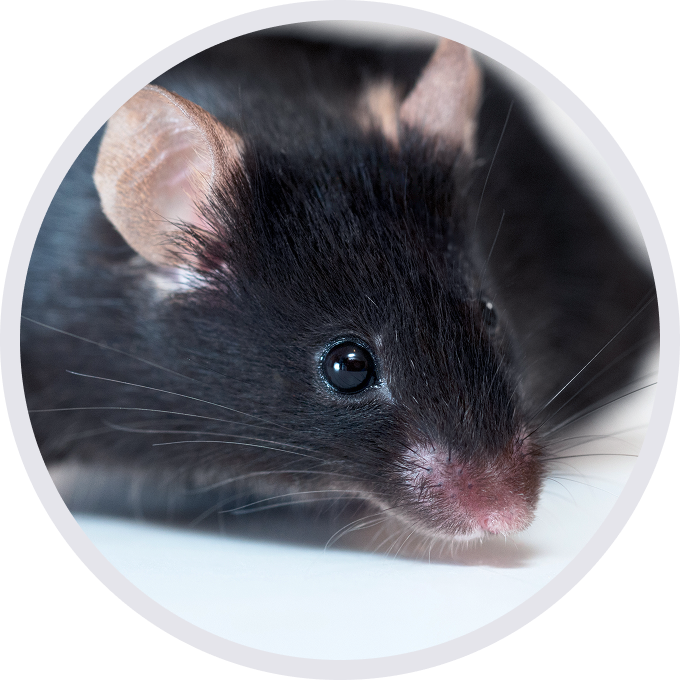
C57BL/6JNifdc-B2mtm1(B2M/HLA-B35.1/H2-D)Bcgen/Bcgen • 113649
Gene targeting strategy for B-HLA-B35.1 mice. The B2M gene (Exon1 to Exon3) of mouse were replaced by the sequence encompassing the human B2M CDS and HLA-B*3501 gene that included leader sequence, α1 and α2 domains ligated to a fragment of the murine H-2Db gene containing the α3, transmembrane and cytoplasmic domains.
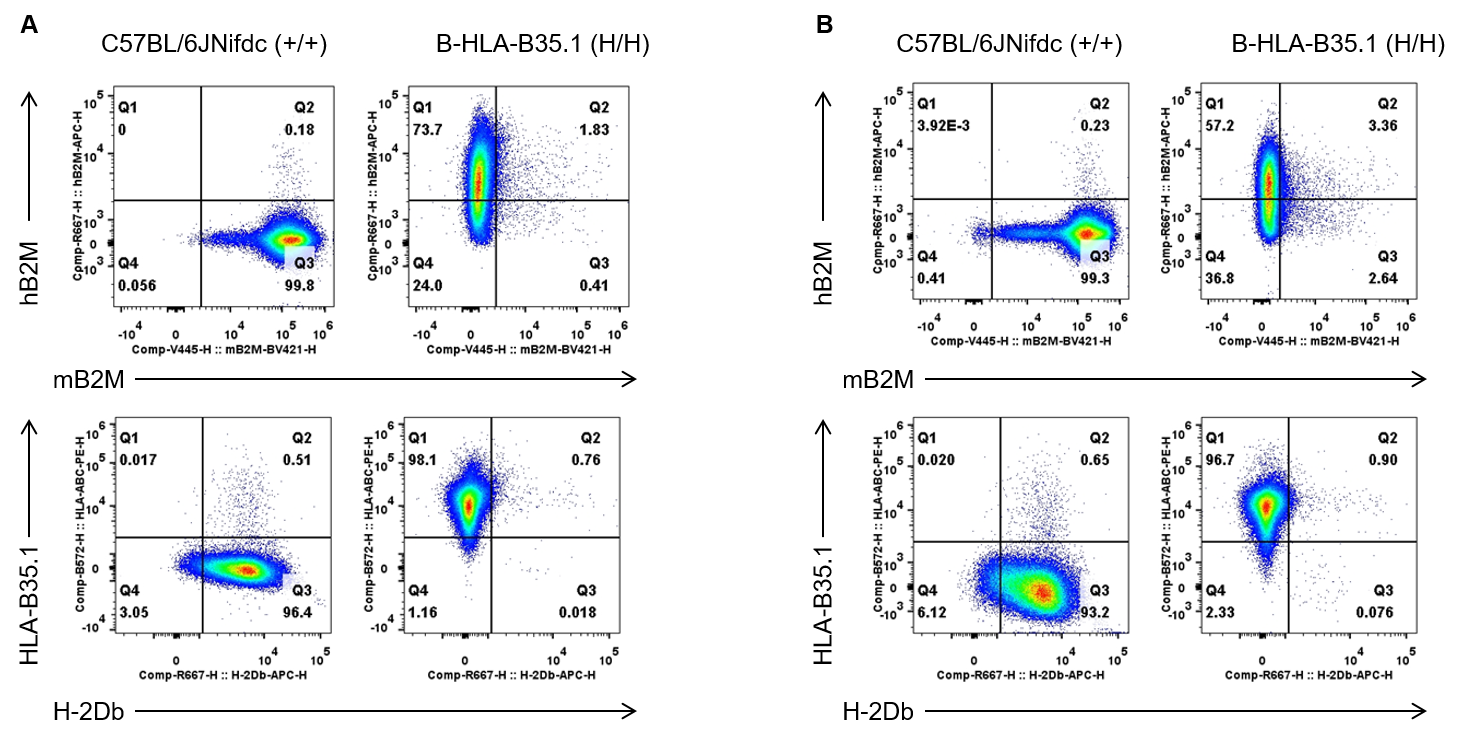
Strain specific B2M and HLA-B35.1 expression analysis in wild-type C57BL/6JNifdc mice and homozygous humanized B-HLA-B35.1 mice by flow cytometry. Splenocytes (A) and blood (B) were collected from wild-type C57BL/6JNifdc mice (+/+) and homozygous B-HLA-B35.1 mice (H/H), respectively, and analyzed by flow cytometry with species-specific anti-HLA-B35.1 (Biolegend, 311406), anti-H-2Db (Biolegend, 111513), anti-hB2M (Biolegend, 395712), and anti-mB2M (BD Biosciences, 744802) antibody. HLA-B35.1 and human B2M were exclusively detectable in homozygous B-HLA-B35.1 mice.
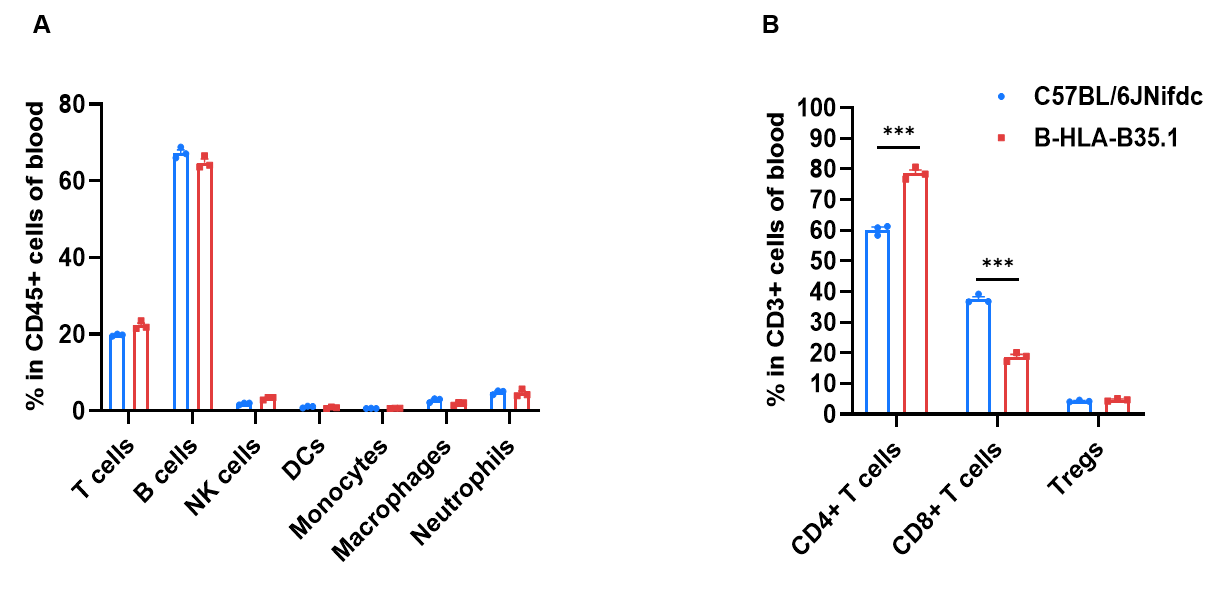
Frequency of leukocyte subpopulations in spleen by flow cytometry. Splenocytes were isolated from wild-type C57BL/6JNifdc mice and homozygous B-HLA-B35.1 mice (female, 7-week-old, n=3). A. Flow cytometry analysis of the splenocytes was performed to assess the frequency of leukocyte subpopulations. B. Frequency of T cell subpopulations. Frequencies of T cells, B cells, NK cells, dendritic cells, monocytes, macrophages, neutrophils and Tregs in B-HLA-B35.1 mice were similar to those in C57BL/6JNifdc mice. The frequency of CD8+ T cells in B-HLA-B35.1 mice were lower than in C57BL/6JNifdc mice, whereas the frequency of CD4+ T cells in B-HLA-B35.1 mice were higher than in C57BL/6JNifdc mice. Values are expressed as mean ± SEM. Significance was determined by two-way ANOVA test. *P < 0.05, **P < 0.01, ***p < 0.0001.
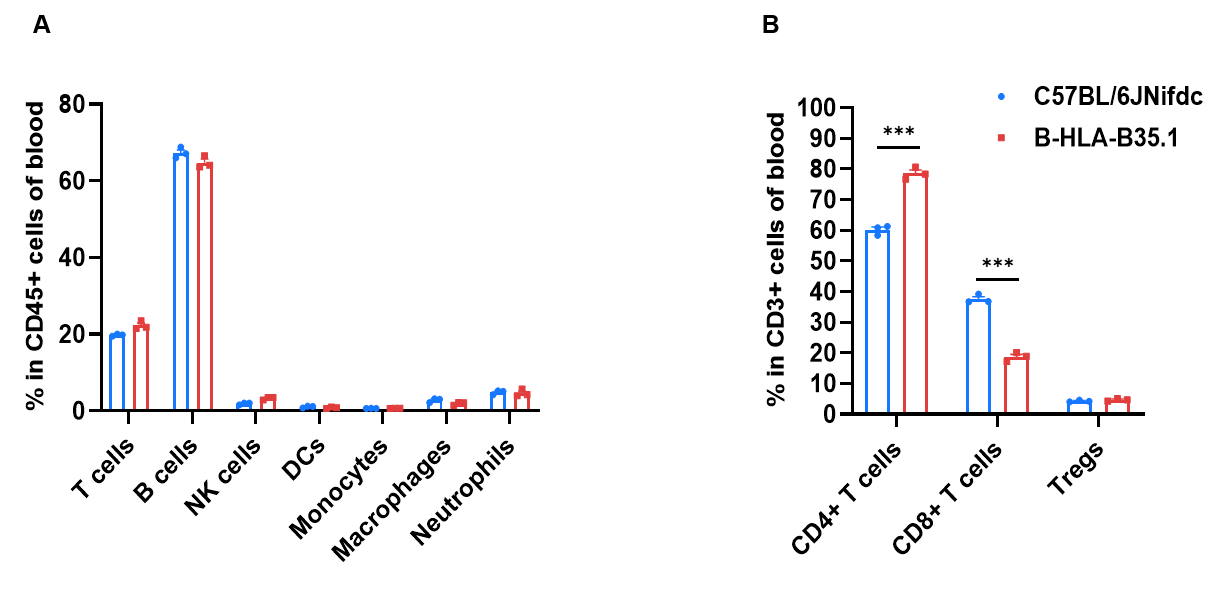
Frequency of leukocyte subpopulations in blood by flow cytometry. Blood were isolated from wild-type C57BL/6JNifdc mice and homozygous B-HLA-B35.1 mice (female, 7-week-old, n=3). A. Flow cytometry analysis of the blood was performed to assess the frequency of leukocyte subpopulations. B. Frequency of T cell subpopulations. Frequencies of T cells, B cells, NK cells, dendritic cells, monocytes, macrophages, neutrophils and Tregs in B-HLA-B35.1 mice were similar to those in C57BL/6JNifdc mice. The frequency of CD8+ T cells in B-HLA-B35.1 mice were lower than in C57BL/6JNifdc mice, whereas the frequency of CD4+ T cells in B-HLA-B35.1 mice were higher than in C57BL/6JNifdc mice. Values are expressed as mean ± SEM. Significance was determined by two-way ANOVA test. *P < 0.05, **P < 0.01, ***p < 0.0001.
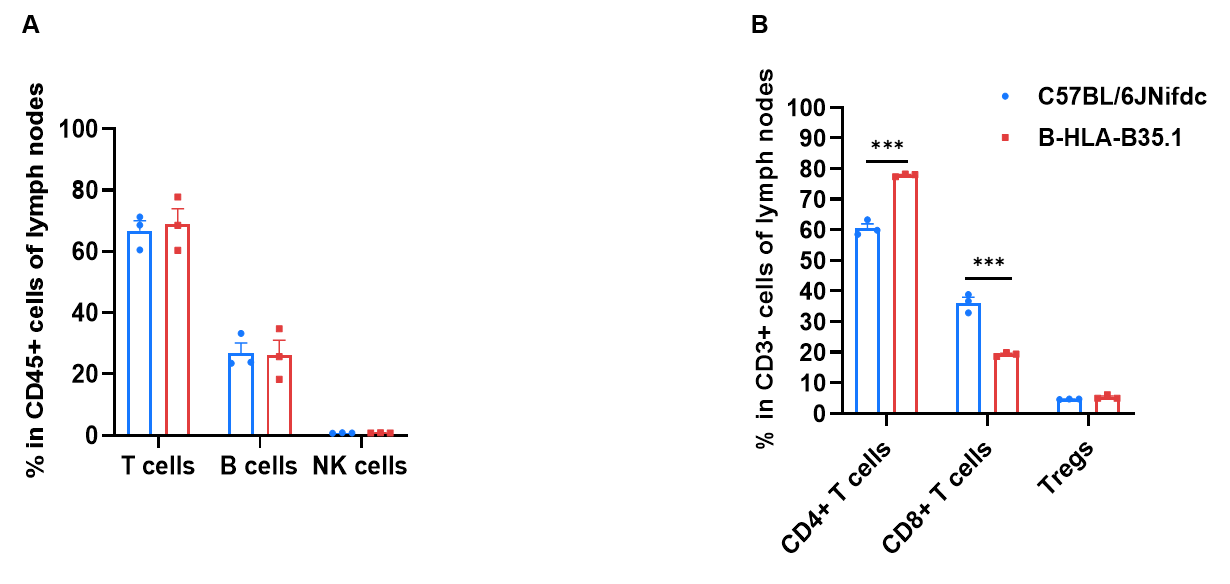
Frequency of leukocyte subpopulations in lymph node by flow cytometry. Lymph node cells were isolated from wild-type C57BL/6JNifdc mice and homozygous B-HLA-B35.1 mice (female, 7-week-old, n=3). A. Flow cytometry analysis of the lymph node was performed to assess the frequency of leukocyte subpopulations. B. Frequency of T cell subpopulations. Frequencies of T cells, NK cells and Tregs in B-HLA-B35.1 mice were similar to those in C57BL/6JNifdc mice. The frequency of CD8+ T cells in B-HLA-B35.1 mice were lower than in C57BL/6JNifdc mice, whereas the frequency of CD4+ T cells in B-HLA-B35.1 mice were higher than in C57BL/6JNifdc mice. Values are expressed as mean ± SEM. Significance was determined by two-way ANOVA test. *P < 0.05, **P < 0.01, ***p < 0.0001.